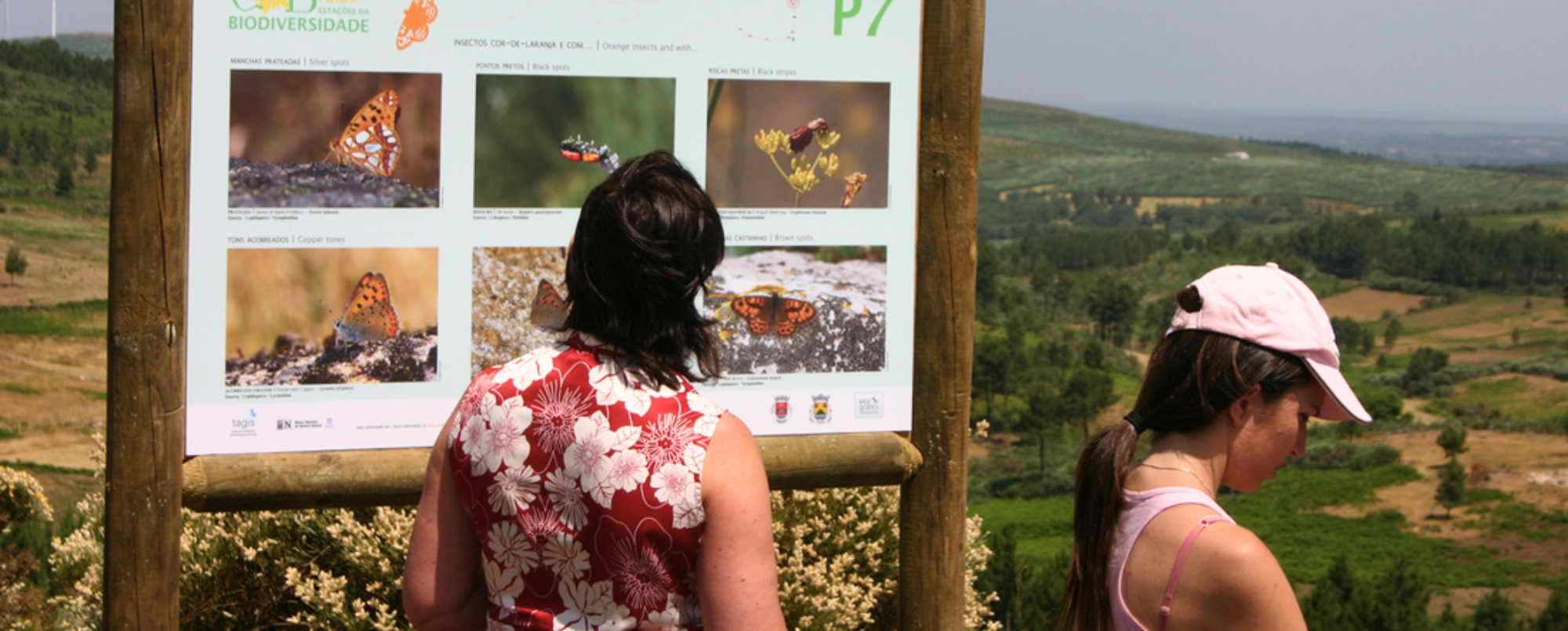The Biodiversity Stations are short walking routes (maximum 3 km), signposted on the ground with 9 information panels on the biological riches to be observed by visitors. Each station is located in a place of high specific and landscape richness, representative of the area's characteristic habitats. The panels act as a kind of field guide and refer to emblematic and common species. Particular emphasis is placed on insects and plants, which are the basis for the conservation of terrestrial ecosystems.
From the inventory studies already carried out, more than 5,000 observations have been recorded, corresponding to around 750 species of invertebrates (most of them insects), 100 vertebrates and 750 plants. An image database has also been built up with more than 20,000 photographs.
The EBIO network began with a project by Tagis - the Portuguese Butterfly Conservation Centre, funded by EEA Grants. Since 2010, in addition to Tagis, the National Museum of Natural History and Science and the Centre for Ecology, Evolution and Environmental Change have been responsible for the stations.
Although some of the stations were created with the support of private organisations, the majority were funded by the municipalities where they are located. It should be emphasised that the support of local councils is essential, but especially important for publicising and boosting environmental education and nature tourism activities.

EBIO objetives
The main objectives of this project are to increase knowledge about biodiversity, contribute to the valorisation of our natural heritage and, above all, promote citizen participation in the inventory of our fauna and flora. So anyone, regardless of profession or age (from 7 to 77, like Tintin...), can go to an EBIO and actively collaborate in its inventorying and monitoring.
This network represents a large part of the country's diversity of habitats and species and includes prime locations for continuing the work of inventorying, observing and monitoring biodiversity. The stations also have great potential for training activities and environmental tourism.

